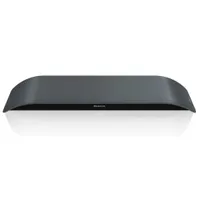I added this under-monitor soundbar to my desk setup — and it's the perfect space saver
Plus it pumps out the bass thanks to its built-in subwoofer
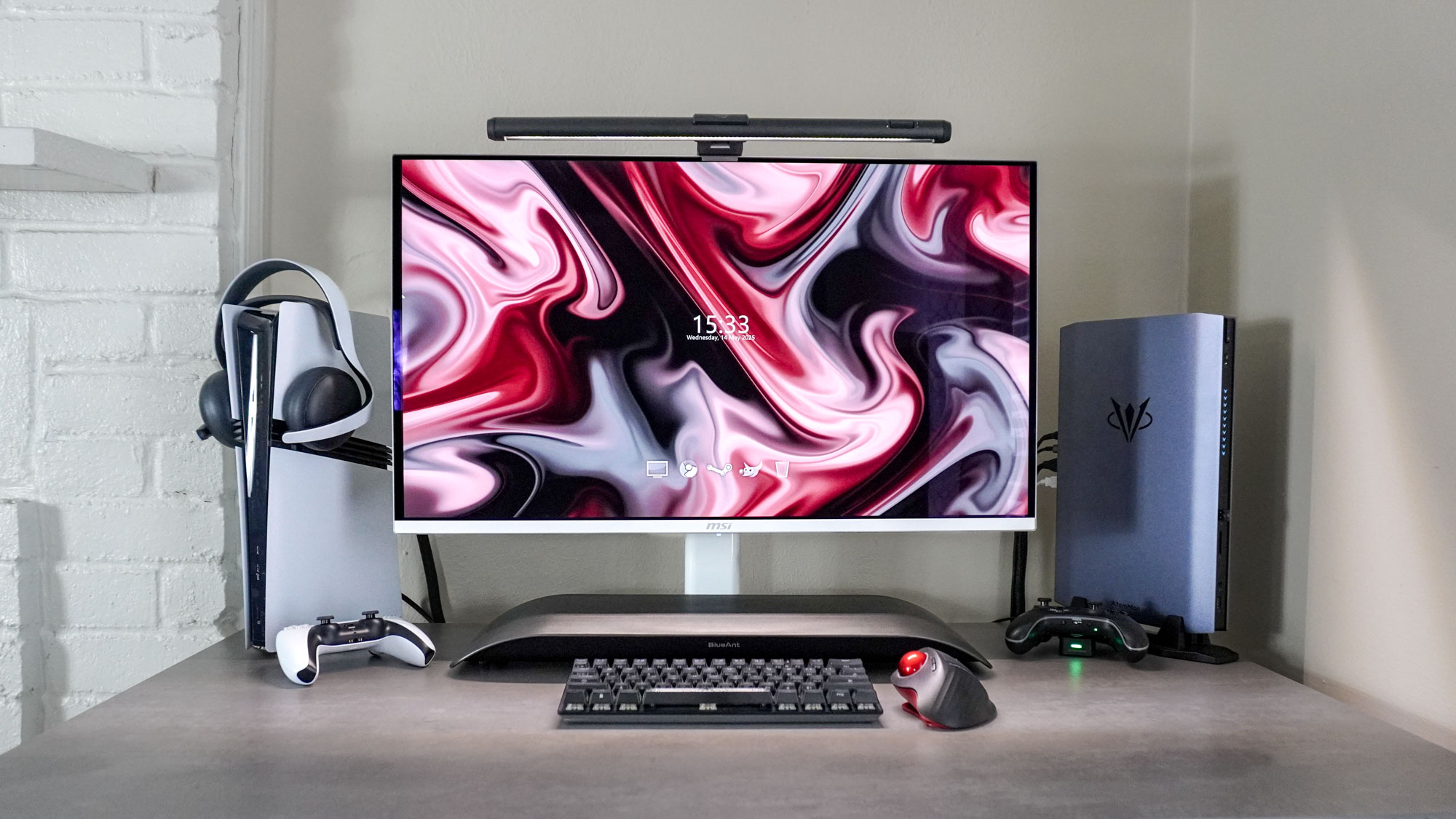
Depending on how you configure your desk setup, space can certainly be at a premium, especially if you have a large desktop computer or a lot of accessories.
One accessory that can certainly take up a lot of space is a pair of computer speakers. This is why I often choose a monitor with built-in speakers when reviewing the best standing desks. However, not every monitor comes with built-in speakers and even then, a lot of people just can’t stand the subpar and often tinny sound produced by these smaller speakers.
When it comes to the best monitors, chances are, you won’t find a pair of built-in speakers in most of the best gaming monitors. This is because with gaming monitors, the companies that make them are more focused on delivering great picture quality and the fastest refresh rates possible instead of an excellent audio experience.
Likewise, many gamers prefer wearing one of the best gaming headsets while at their desk to fully immerse themselves in what they’re playing.
One way to get around having a pair of bulky computer speakers taking up unnecessary space on your desk is to buy a soundbar instead.
Just like in your living room, one of the best soundbars is a far more compact solution than a pair of speakers or a surround sound system. After testing out a smaller, cheaper soundbar, I decided to take a chance on the more expensive BlueAnt Soundblade for my gaming setup and I’m glad I did. Here’s why.
This slim soundbar is designed to go between your monitor’s display and its stand to utilize the unused space between them. It can connect to your PC, Mac or game console over Bluetooth or via USB-C or an auxiliary cable. You get a remote and all the cables you need in the box along with some taller removable feet. It also comes in a number of different colors including charcoal, white, green and pink.
Thin but powerful
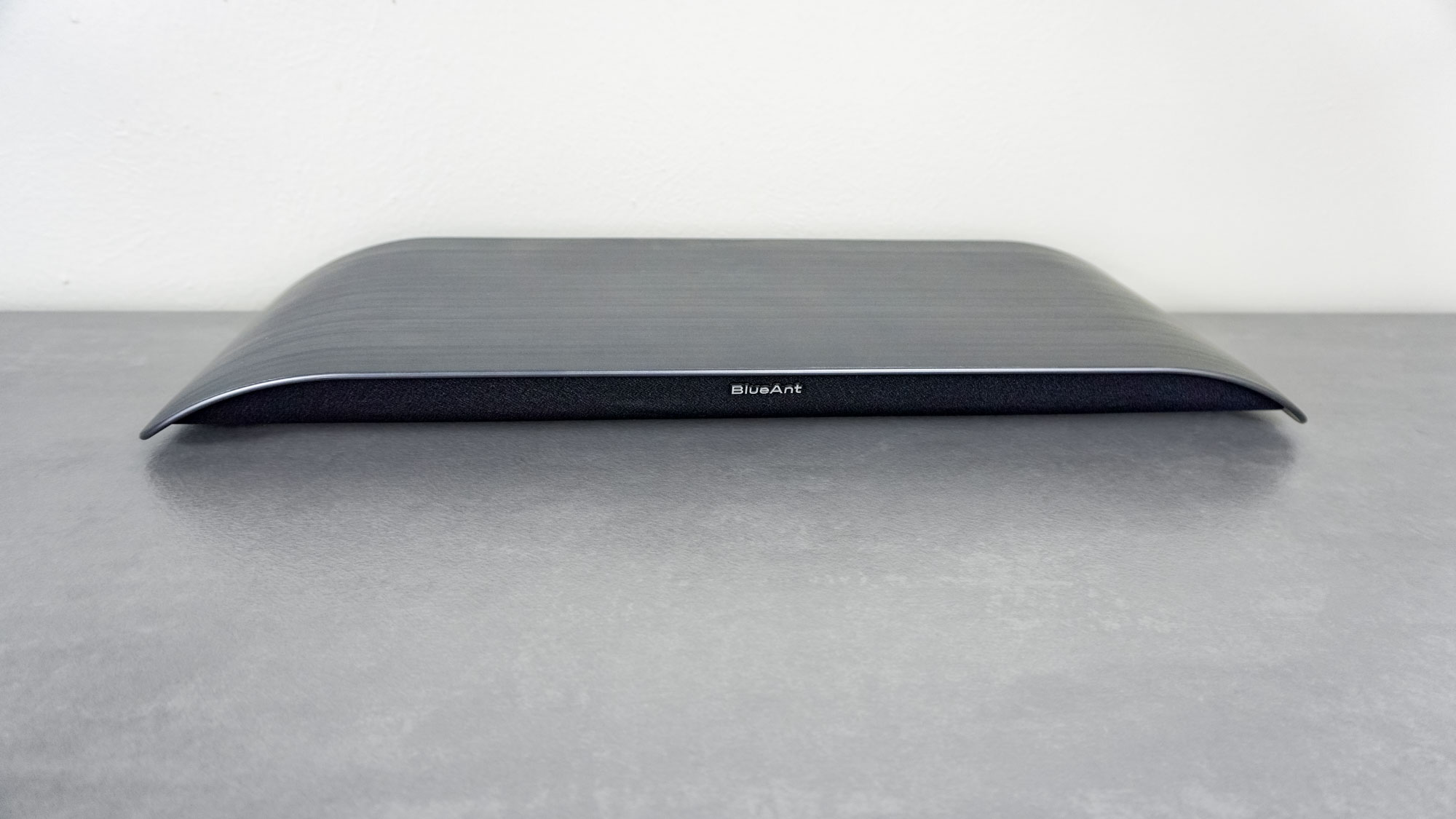
At 23 x 8.58 x 2.13 inches, the BlueAnt Soundblade doesn’t take up that much space on your desk at all. And, unlike with other soundbars, this one is designed to go under your monitor. It’s also quite light at just 3.75 pounds.
Get instant access to breaking news, the hottest reviews, great deals and helpful tips.
One thing that immediately drew me to this soundbar in particular is the fact that it’s designed to sit in the typically unused space between your monitor and its stand. However, it works even better when you have your display mounted on one of the best monitor arms as you can keep the soundbar closer to your desk which really helps with the bass.
Besides the more traditional charcoal color I went with, the BlueAnt Soundblade also comes in white, pink and green to match the rest of your desk setup. Unlike with other computer speakers like the AudioEngine A2s, you don’t have to pay more if you want this soundbar in a brighter and less conventional color.
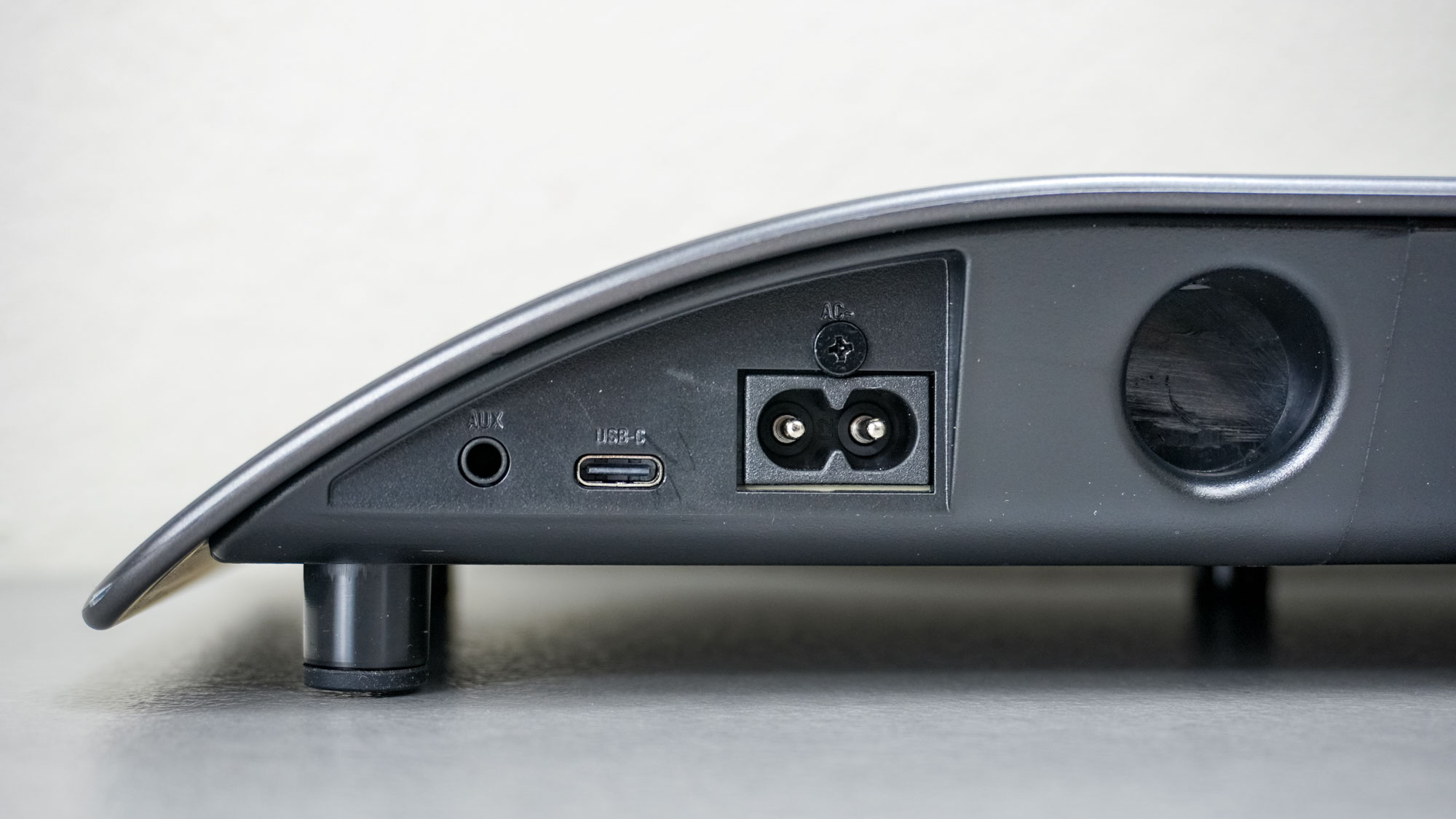
All of the BlueAnt Soundblade’s ports are located on the right side at the back of the soundbar. This makes for easier cable management and you don’t have to run wires under your desk from one speaker to another like you would with bookshelf speakers.
In addition to a standard AC power port, you also get a USB-C port and a 3.5mm audio jack to connect the Soundblade to your computer or game console.
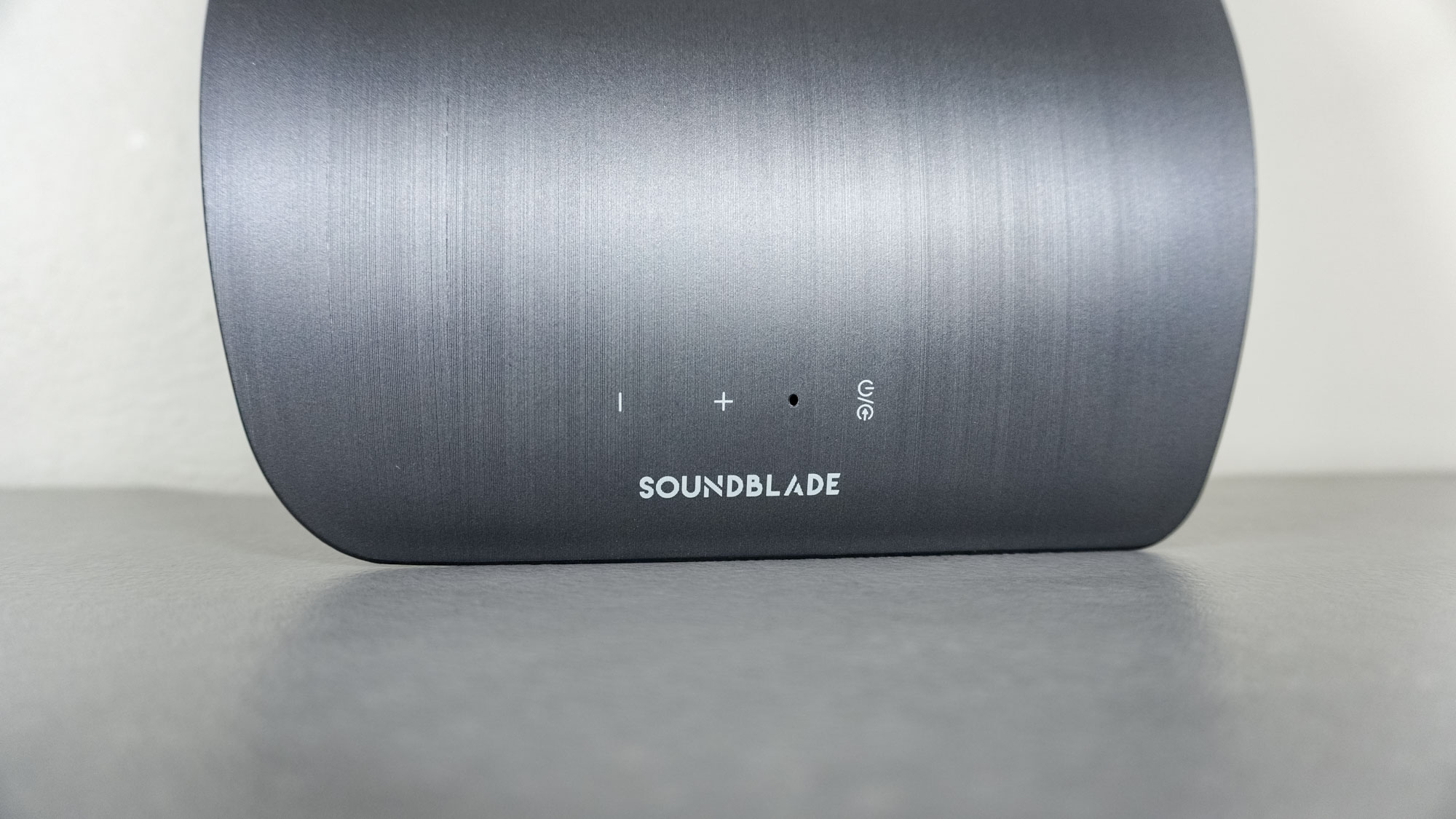
I used this under-monitor soundbar with a PS5 and one of the best mini PCs, so to simplify things, I just connected it to my gaming monitor using an auxiliary cable.
However, it also has Bluetooth 5.3 on board if you don’t want to bother with running wires from it to your other devices. There are also touch-sensitive buttons on the right side which you can use to pair new Bluetooth devices as well as to raise or lower the volume and to power off this soundbar.
Under the hood, the BlueAnt Soundblade is quite powerful despite its low-profile design. It can reach up to 120 watts at peak power and features two 0.8 x 3.3-inch Neodymium magnet drivers. While you might be thinking this is just a thinner soundbar, turning it over reveals what really sets it apart from the likes of the Razer Leviathan V2 X or the Creative Sound Blaster GS3 I was previously using with my gaming setup.

On the bottom of the BlueAnt Soundblade, you’ll find a 3.1-inch, Neodymium subwoofer right in the center. While it doesn’t produce anywhere near the same bass you’ll get with a dedicated subwoofer, you do tend to feel it a bit more since this soundbar’s subwoofer fires directly down onto your desktop. This is especially true if you prefer to play with mouse and keyboard over a controller since your forearms will likely be resting on the edge of your desk.
The Soundblade also has eight rubber feet on either side of its subwoofer. These help prevent it from vibrating on your desk but BlueAnt also includes a taller set of feet in the box too. By swapping out the feet, you can lift the soundbar slightly higher up which can really come in handy if your monitor’s stand is on the taller side.
For instance, I had to do this at first as I was using my monitor’s included stand. However, once I mounted my monitor to the back of my desk to free up even more space, I switched back to the shorter feet as I found that the Soundblade produced better bass and remained firmly in place when I did. Still, it’s always nice to have options.
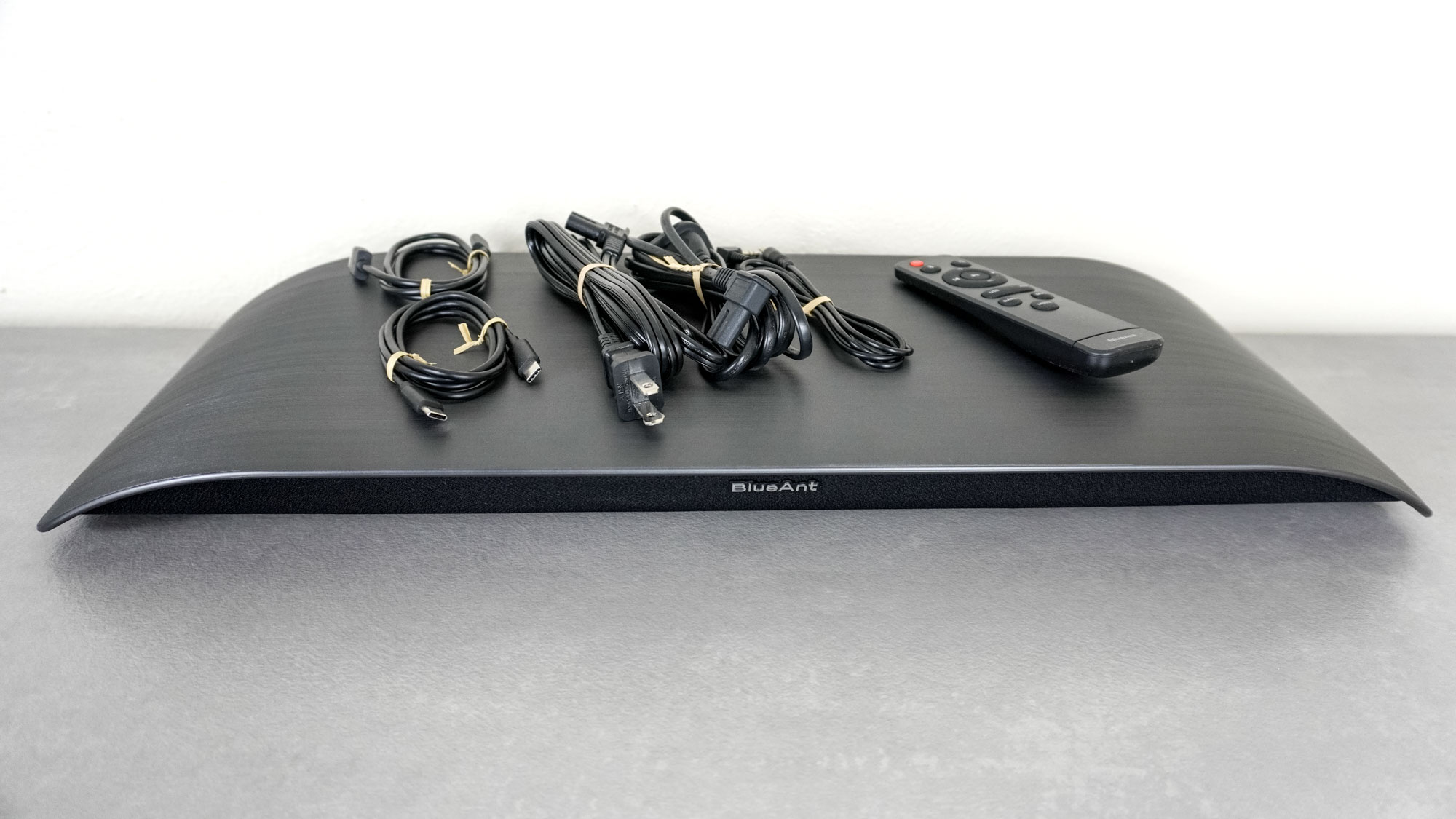
Along with those extra feet, you get all the cables you’ll need to get this soundbar set up in the box, including both U.S. and U.K. power cables. You also get a remote for the Soundblade which in my experience, made it easier to quickly adjust its settings. Don’t get me wrong, the touch-sensitive buttons work well enough but I didn’t like having to reach across my desk to lower the volume or switch between inputs.
A double space saver

With the BlueAnt Soundblade directly under my monitor, I had enough space on either side for the PS5 Pro I used for my ultimate remote play setup and the AtomMan G7 Ti mini PC.
That way, I could have the best of both worlds with console gaming on the left and PC gaming on the right. At the same time, when I needed even more desk space, I could put my mechanical keyboard and trackball mouse on top of the soundbar to have them both out of the way.
In terms of sound quality, the Soundblade was a big step up from both the built-in speakers I’m used to and the Sound Blaster GS3 I previously paired with my gaming monitor.
Game audio was clear and I liked the extra bass from its subwoofer being a lot closer to my ears, even if I mostly played with one of the best PC game controllers. The Soundblade is also a very loud subwoofer and at night, I had to turn it down to its lowest setting to avoid waking everyone up. During the day though, it was a different story and I liked how it filled the area around my desk setup with fuller sound.
Although I used an aux cable to simplify my setup, you can connect this soundbar directly to either your PS5 or PC over USB-C. However, if you don’t want a cable running from the front of your console, you will need to pick up a USB-C to USB-A adapter.
Unlike with the Nintendo Switch or the recently released Switch 2, the PS5 and the PS5 Pro both don’t natively support Bluetooth audio which makes a wired USB-C connection your best option. On PC though, you can use your computer’s 3.5mm audio jack, USB-C or Bluetooth.
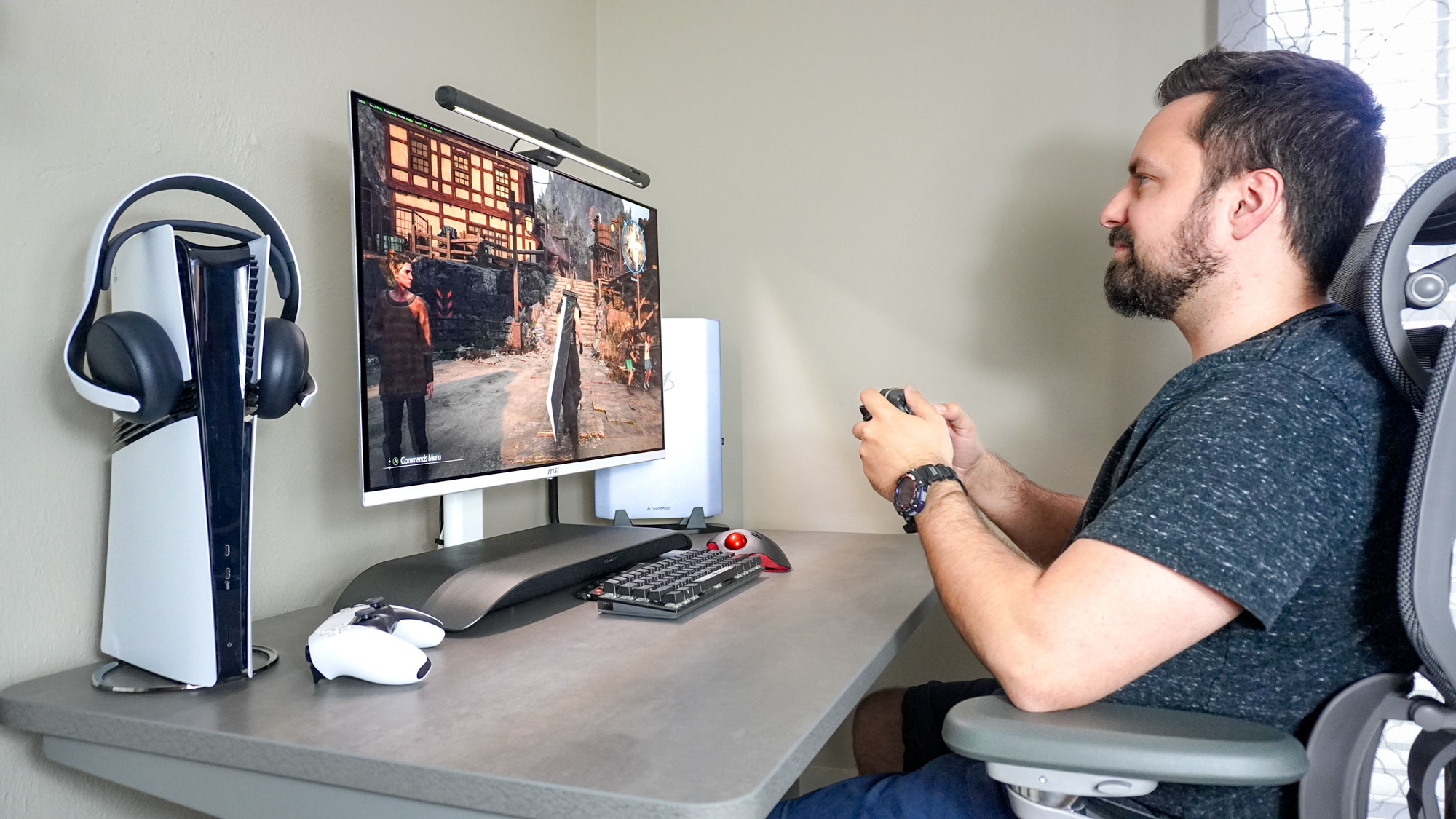
I really liked not having a gaming headset or a pair of headphones over my ears while playing as I could hear the game and what was going on around me at the same time. For those who prefer using a headset, I recommend the TurtleBeach Atlas Air (at least on PC and PS5 wirelessly) as its open-back design lets you achieve something similar. However, you won’t get the bass that you do from the Soundblade’s subwoofer which can really help elevate your gaming experience since you can feel all the action a bit better in action-packed games like Final Fantasy 7 Rebirth.
With this soundbar, you get the best of both worlds in a slim package that takes advantage of all that unused space under your monitor to boot.
A lot of times, you might not have space for a large, dedicated subwoofer underneath your desk or if you live in an apartment, it might be too loud and bother your neighbors. With this soundbar, you get the best of both worlds in a slim package that takes advantage of all that unused space under your monitor to boot.
There is one downside to the BlueAnt Soundblade worth noting but fortunately, there’s already a fix. When powering on or off the device as well as switching inputs, you’re greeted with rather loud voice prompts with no way to turn them off.
I did find an easy workaround when I first started using this soundbar. Instead of powering it down, I left it on with the volume turned down and then I’d turn up the volume once pairing was complete.
Now though, you can reduce the soundbar’s voice prompt volume level and get greater control over its volume at lower levels by updating its firmware. However, doing so takes a bit more work than you’d expect. The process starts by registering your Soundblade, finding its serial number and current firmware version and then reaching out to BlueAnt’s support team. Once this is done, they’ll provide you with the correct firmware file for the update which you can install using one of the best USB flash drives. So far, there have been six minor and one major firmware update for the Soundblade which fix bugs and improve the device’s usability.
Not quite for everyone

So is an under-monitor soundbar the best option for your desk setup? Well, it depends on your audio needs as well as how much space you have. Audiophiles will likely opt for bookshelf or computer speakers instead due to their richer sound quality. However, if you just want to play games without a headset or watch videos on your computer without wearing headphones, it might just do the trick.
In a desk setup like mine above, you’re able to make the most of your space and you don’t have to worry about tucking wires behind or under your desk. Now if you’re using one of the best laptops or even one of the best gaming laptops instead of a desktop or console, you’ll have plenty of room on either side of your monitor for a pair of computer speakers.
Alternatively, if you are short on space, you could always mount your speakers on the wall or even use some clamp-on stands to have them at the back or on the sides of your desk.
Since I’m using a standing desk though, I like to have everything right on my desk itself and plugged into a cable management tray underneath it. That way, I don’t have to worry about things getting unplugged or cables getting snagged as my desk moves up and down.
At $200 full price, the BlueAnt Soundblade is certainly on the expensive side for a subwoofer for your computer or consoles. However, you can frequently find it for half off or even more. I too bought it when it was on sale and at $100, you’d be hard pressed to find a soundbar with a built-in subwoofer for that price. Sure, there are other cheaper options for your computer where you don’t necessarily have to wait for a sale like the Razer Leviathan V2X ($99, Amazon). However, that soundbar only comes with a USB-C port and Bluetooth which makes it less versatile connectivity wise when compared to the Soundblade which you can connect to your monitor and other devices using an aux cable.
If you’re looking for a soundbar with some bass that fits perfectly under most monitors, the Soundblade is a great choice, especially if you can find it on sale and going through the process of updating its firmware fixes all of my biggest gripes with the device.
More From Tom's Guide
- I built a completely distraction-free desk setup with these 10 gadgets
- This GaN charger let me finally ditch my bulky laptop charger for good
- I love cable management but I found the perfect standing desk for people that hate it

Anthony Spadafora is the managing editor for security and home office furniture at Tom’s Guide where he covers everything from data breaches to password managers and the best way to cover your whole home or business with Wi-Fi. He also reviews standing desks, office chairs and other home office accessories with a penchant for building desk setups. Before joining the team, Anthony wrote for ITProPortal while living in Korea and later for TechRadar Pro after moving back to the US. Based in Houston, Texas, when he’s not writing Anthony can be found tinkering with PCs and game consoles, managing cables and upgrading his smart home.
You must confirm your public display name before commenting
Please logout and then login again, you will then be prompted to enter your display name.
